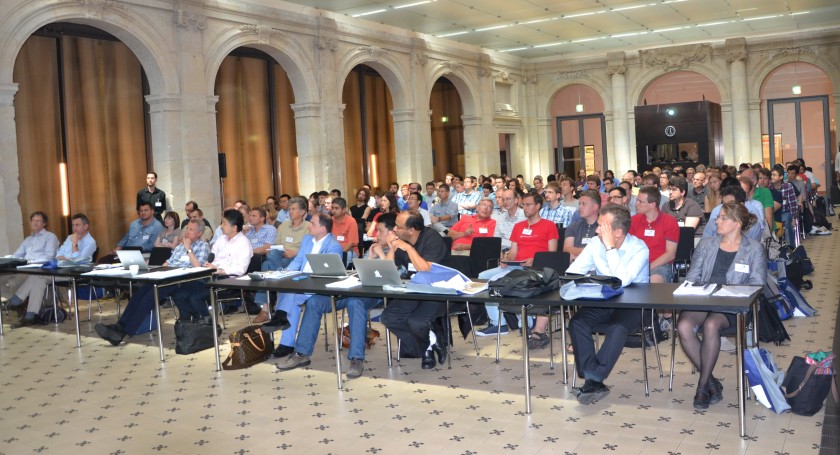Leading scientists on topological insulators met in Berlin

Outstanding researchers took part in the “New Trends in Topological Insulators 2014” - workshop.
From July 7-10, 150 researchers met in Berlin to discuss recent findings in the field of topological insulators.
Topological insulators are a rather new form of quantum matter with an insulating bulk and a metallic surface created by topologically protected and spin polarized electronic states.
Outstanding researchers took part in the “New Trends in Topological Insulators 2014” - workshop, organized by Gustav Bihlmayer (Forschungszentrum Jülich) and Saskia Fischer (Humboldt University and Oliver Rader of HZB. 20 speakers had been invited for presentations, the 2012 Buckley Prize winners Shoucheng Zhang and Laurens W. Molenkamp (also Leibniz Prize 2014), Zhi-Xun Shen (Buckley prize 2011) and Yoichi Ando (2014 Inoue Prize for Science) being among them.
Breakthrough results were delivered on topics such as optical excitation, electron-photon entangled states, the role of electron correlation as well as imaging of helical edge states and Majorana fermions.
The event took place on the premises of the Berlin-Brandenburg Academy of Sciences. It has been generously supported by DFG as well as HZB.
Oliver Rader / kmh
-
Watching indium phosphide at work
Indium phosphide is a versatile semiconductor. The material can be used for solar cells, for hydrogen production and even for quantum computers – and with record-breaking efficiency. However, little research has been conducted into what happens on its surface. Researchers have now closed this gap and used ultra-fast lasers to scrutinise the dynamics of the electrons in the material.
-
Freeze casting - a guide to creating hierarchically structured materials
Freeze casting is an elegant, cost-effective manufacturing technique to produce highly porous materials with custom-designed hierarchical architectures, well-defined pore orientation, and multifunctional surface structures. Freeze-cast materials are suitable for many applications, from biomedicine to environmental engineering and energy technologies. An article in "Nature Reviews Methods Primer" now provides a guide to freeze-casting methods that includes an overview on current and future applications and highlights characterization techniques with a focus on X-ray tomoscopy.
-
IRIS beamline at BESSY II extended with nanomicroscopy
The IRIS infrared beamline at the BESSY II storage ring now offers a fourth option for characterising materials, cells and even molecules on different length scales. The team has extended the IRIS beamline with an end station for nanospectroscopy and nanoimaging that enables spatial resolutions down to below 30 nanometres. The instrument is also available to external user groups.
